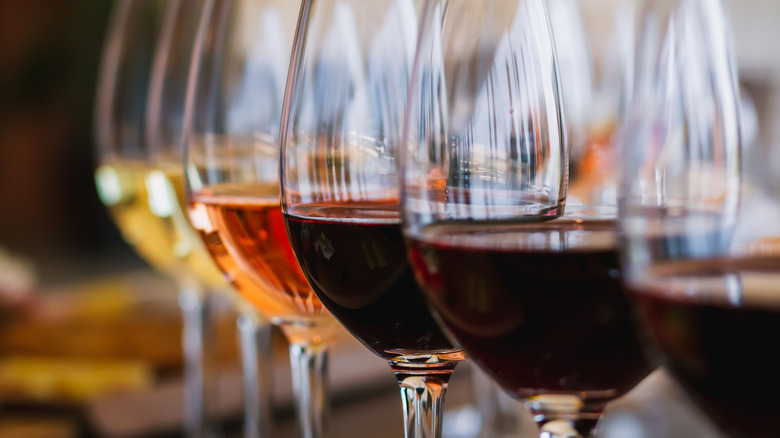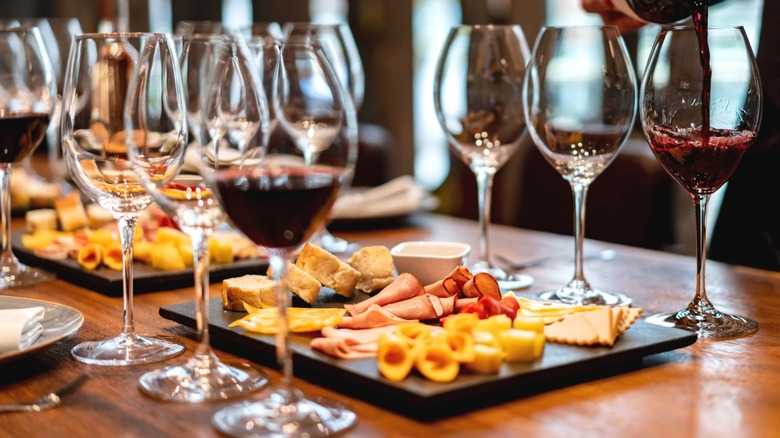Why Sommeliers Want You To Consider The Weight Of Your Wine When Pairing It With A Dish
Pairing wine with food can be intimidating, but it doesn't need to be. When you break a wine down to its basic features, it becomes a lot easier to figure out what kinds of wine go with what types of food. You probably know that flavor profiles are important when it comes to pairing wine and food, but the weight of your wine may be something you've overlooked in the past. To help us understand more about how weight plays a role in wine pairings, we reached out to Doreen Winkler, natural wine sommelier, orange wine expert, and founder of Orange Glou, the world's first orange wine subscription service and wine store, in New York City. When we talk about weight, we aren't asking you to place the wine on a scale.
"Weight has to do with the body of the wine," Winkler told us. While you could describe a wine as being lean or heavy and some people might understand what you're saying, it's not the usual way to talk about a wine's weight. "We look at wine as a range from light to medium to full-bodied," she explained. So, when you hear someone describe their Cabernet Sauvignon as being big-bodied or full-bodied, now you know that they're talking about the wine's weight. Weight and body refer to how the wine feels in your mouth. A light-bodied wine is thinner, more acidic, and tends to have a lower alcohol content. A full-bodied wine has more tannins, less acidity, a higher alcohol content, and an overall denser mouthfeel.
Putting wine weights into practice
Doreen Winkler described weight as being "one of the most important considerations when pairing wine," adding, "When it comes to orange wine, a lighter-bodied macerated Sauvignon Blanc from Austria will pair well with fresh seafood due to its crisp, minerally flavor profile." Fresh seafood has a bright saltiness to it and doesn't weigh heavily in your stomach after you've eaten it. Because the food can be characterized as light and refreshing, we would do well to pair it with a refreshing, light-bodied wine.
"Fuller-bodied Georgian wines, such as a Rkatsiteli aged in amphora, are more tannic and earthy," Winkler went on. "Which makes a great wine pairing for aged cheese and other richer foods." Foods that are dense, bold, or hearty could be described as being heavy, so we want to pair that heaviness with a full-bodied wine that can compete with those flavors.
If your wine is too light for the dish, you won't be able to taste it. The big, bold flavors of the food are going to drown out what makes that wine special. The opposite is also true. If you pair a full-bodied wine with a light dish, then that wine is going to outplay the food's flavors, leaving you with the impression that the food is somehow lacking when it really isn't. This is why medium-bodied wines are so versatile in food pairings because they occupy an easy middle ground.

